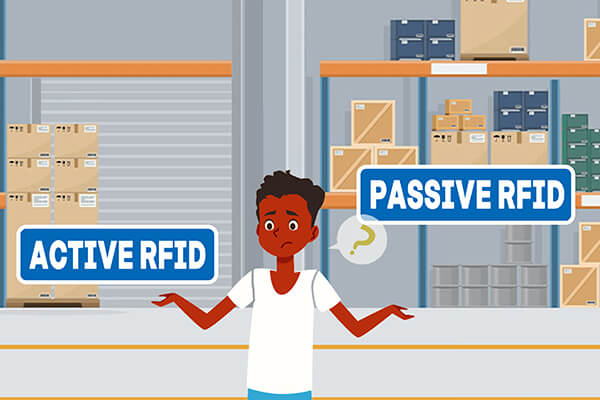RFID tags use radio frequency to search, identify, track and communicate with people and items. These tags are smart labels that can store a range of information from serial numbers to a short description of data. RFID tags contain an antenna and an integrated circuit that transmit data to the RFID reader. These tags are divided into two types; active RFID and passive RFID tags. Then, what’s the difference between these two?
Active RFID
Also known as battery-powered tags and they are powered using an internal battery or solar. Due to the in-built power supply, the tag can transmit data to a reader on its own without the need to draw power from the reader. The power source is used to run the microchip’s circuitry and also broadcast a signal to a reader. Active tags can read from distances of 100 feet or more. These tags are always energized and they have a low magnetic field strength since they emit signals using the internal battery source. Their shelf life is limited to about 2-3 years which is the life of a battery. These tags are slightly bulky due to the battery and are quite expensive.
Passive RFID
A passive RFID system comprises an RFID antenna, an RFID interrogator or reader, and RFID tags. RFID tags are energized using the power from a tag reader. Therefore, the RFID tag reader must be able to emit stronger electromagnetic signals which in turn, identifies vert weak signals from the passive RFID tag. These tags are comprised of three elements; an antenna, an integrated circuit or microchip, and a substrate. The chip stores data and perform specific tasks. However, depending on its design, the chip may be; write-once-read-many (WORM), read-only (RO), or read-write (RW). The antenna is attached to the chip and its main purpose is to absorb radio frequency waves from the reader’s signal and then send and receive data. The substrate is commonly a plastic film to which both the chip and the antenna are attached. Passive RFID reads up to 3 meters which is usually the area covered by the reader. It is energized only when there is a reader present. It has a high magnetic field strength since the tag draws power from the electromagnetic field provided by the reader. Passive RFID has a high shelf life and can store limited data typically 128 bytes.
Passive RFID tags operate at different frequencies namely; Low Frequency (LF), High Frequency (HF), and Ultra-High Frequency (UHF). The frequency range along with other factors determines the attachment materials, read range, and application options. Passive LF tags usually have a short read range of about 1-10 centimeters. HF tags have a read range of about 1 cm up to 1 meter. UHF tags can read up to an average distance of about 5-6 meters but larger UHF tags can achieve up to 30+ meters of reading range in ideal conditions.
Conclusion
In the passive RFID, the antenna’s size and shape are important to the performance of the tag. The larger the antenna’s size the more energy it can collect and then send back out.
Click here to learn more about the products that you can use in your project. If you are not sure, welcome to contact our sales experts any time.
